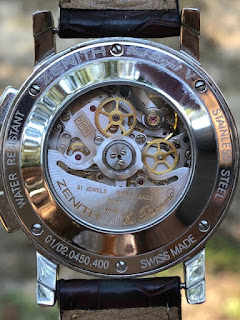Inheriting a Ring With a Tragic Story
"My uncle wore this ring always -- until he was shot. Somehow, it ended up on my hand."
 My mother had seven siblings. There were two brothers and this ring belonged to one of the brothers, the older one. He wore this ring always -- until he was shot. On the night he was shot, his wife took it off his finger and put it on her finger and wore it until she died. Then her niece, my cousin, inherited it. I really had not ever thought about this ring one way or the other. On my last trip to Miami, my cousin picked me up for lunch, and at the restaurant, she said, "I've got a couple of things for you." She was a very sweet woman who wouldn't hurt a fly. She gave me a photograph that I'd never seen of myself from when I was about 10. Then she pulls this ring out, and I started to cry because I knew the story.
My mother had seven siblings. There were two brothers and this ring belonged to one of the brothers, the older one. He wore this ring always -- until he was shot. On the night he was shot, his wife took it off his finger and put it on her finger and wore it until she died. Then her niece, my cousin, inherited it. I really had not ever thought about this ring one way or the other. On my last trip to Miami, my cousin picked me up for lunch, and at the restaurant, she said, "I've got a couple of things for you." She was a very sweet woman who wouldn't hurt a fly. She gave me a photograph that I'd never seen of myself from when I was about 10. Then she pulls this ring out, and I started to cry because I knew the story. She said, "Oh, don't cry. People will think I said something mean to you." She's looking around and she said, "No, no we're Cuban, we don't cry at restaurants." And I'm laughing and crying. It was such an emotional moment because I had not thought about this ring for one second, but the moment I saw it, I remembered the story.
My mother's brother came to the United States embassy in 1960, immediately after Castro took over, one of the early wave of exiles. My cousin and I lived with him when we came to Miami alone in 1961. He borrowed some money and opened up a grocery store -- not that he knew anything about grocery stores -- it was one of those little businesses that began to pop up when the Cuban exiles first came to Miami.
By the early 70s, he had enough money that he and his wife were going to take a trip to Europe. At the end of this one day, he gave rides home to a couple of his employees. He usually had the money from the day earnings, but this day he had more because they were going on that trip. A couple of masked men came to each side of the car with weapons and he saw the one on his wife's side holding a gun to her head but he didn't see the other one or at least that's the story, who knows. So he pulled a gun himself to protect her and this guy shot him in the head.
Turns out they left without anything. It could have been an execution, it could've been a robbery. It's very hard to tell exactly what happened, it happened fast and he was dead. His wife died only about three years ago. I knew she wore it — I saw her wear it — but somehow I didn't have any emotional connection to the ring until all of a sudden, it was like the end of the story.
 My cousin gave it to me. She could've kept it, she could've given it to her son, to her husband, to her uncles, to her father, but she thought that he would want me to have it. I'm not sure that that's true because — who knows? But, nonetheless, somehow, it ended up on my hand.
My cousin gave it to me. She could've kept it, she could've given it to her son, to her husband, to her uncles, to her father, but she thought that he would want me to have it. I'm not sure that that's true because — who knows? But, nonetheless, somehow, it ended up on my hand.
Maria Emilia Froedo, an artist, retired arts administrator and educator. interviewed by Bijoux Bios’ Jaye Ann Terry in February 2019 in Tampa.
Maria Emilia Froedo taught at the University of South Florida, was the executive director of Florida Craftsmen (now Florida CraftArt), and worked for the Pinellas Opportunity Council, using the arts to stimulate economic development in low-income communities. She has served on numerous state, county and city boards, most recently on the Florida Division of Cultural Affairs Action Planning Task Force. Her own artwork can be found at the Polk Museum of Art, the Gulf Coast Museum of Art, Florida International University, the Leepa-Ratner Museum of Art and in private collections. She was one of six Latino artists to share experiences on the Smithsonian American Art Museum’s public-school curriculums Quilted Landscapes: Expressions of Assimilation. Now retired, she writes and illustrates poems and novellas.





Comments
Post a Comment